Embryology in the Quran: Where Ancient Wisdom Meets Modern Science
Embryology in the Quran is a wonderful example of how centuries-old scripture explained human development with surprising detail.
More than 1400 years ago, the Quran described stages of life inside the womb—long before scientists discovered these secrets.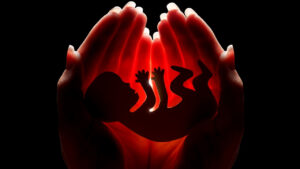
Today, many modern scientific findings confirm what the Quran shared, showing harmony between faith and fact. Now we study on Embryology in the Quran, Quran and embryology, Embryonic stages in Quran, Human development in Islam, Stages of fetus in Quran etc.
Quran
وَلَقَدْ خَلَقْنَا الْإِنسَانَ مِن سُلَالَةٍ مِّن طِينٍ ثُمَّ جَعَلْنَاهُ نُطْفَةً فِي قَرَارٍ مَّكِينٍ
“And certainly We created man from an extract of clay; then We made him a drop in a firm resting place.”
(Quran 23:12-13)
Hadith
إِنَّ أَحَدَكُمْ يُجْمَعُ خَلْقُهُ فِي بَطْنِ أُمِّهِ أَرْبَعِينَ يَوْمًا نُطْفَةً
“Each of you is formed in your mother’s womb for forty days as a drop (nutfah)…”
(Sahih Bukhari 3208)
What is Embryology?
Understanding the Miracle of Life
Embryology is the simple and amazing science of how a baby begins and grows inside the mother’s womb.
It explains the step-by-step way an embryo changes—from a tiny cell to a complete human.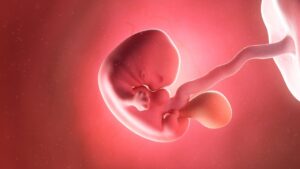
The Quran and Embryology is now a very exciting area for modern science.
Centuries ago, the Quran shared details about human growth in the womb. Today, these details inspire many scientists to explore the harmony between faith and discovery. And explore on Embryology in the Quran, Quran and embryology, Embryonic stages in Quran, Human development in Islam, Stages of fetus in Quran
Quran
ثُمَّ خَلَقْنَا النُّطْفَةَ عَلَقَةً ثُمَّ خَلَقْنَا الْعَلَقَةَ مُضْغَةً
“Then We made the drop into a clinging clot, and We made the clot into a lump (of flesh)…”
(Quran 23:14)
Human Development in Islam
The Spiritual Perspective
In Islam, every human life is considered precious and full of dignity.
The Quran teaches us that every person is given honor and a divine spirit by Allah.
Life is not just about the body—it is also about the soul and respect for all humans.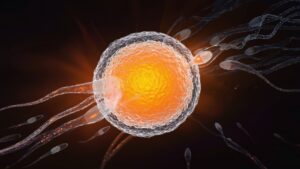
Quran
وَلَقَدْ كَرَّمْنَا بَنِي آدَمَ
“And We have certainly honored the children of Adam…”
(Quran 17:70)
Quran
فَإِذَا سَوَّيْتُهُ وَنَفَخْتُ فِيهِ مِن رُّوحِي
“So when I have fashioned him and breathed into him of My spirit…”
(Quran 15:29)
Hadith
«لَا يَرْحَمُ اللَّهُ مَنْ لَا يَرْحَمُ النَّاسَ»
“Allah does not show mercy to anyone who does not show mercy to people.”
(Sahih Bukhari 7376)
Key Quranic Verses on Human Development
Ancient Wisdom Meets Modern Science
The Quran beautifully describes how a human grows inside the womb.
Here are three important verses that describe stages of embryonic development.
These words are over 1,400 years old, yet they agree remarkably with modern science.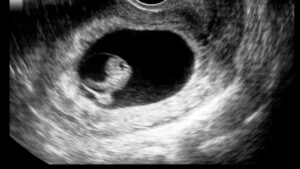
Quran 23:12-14
وَلَقَدْ خَلَقْنَا الْإِنسَانَ مِن سُلَالَةٍ مِّن طِينٍ
ثُمَّ جَعَلْنَاهُ نُطْفَةً فِي قَرَارٍ مَّكِينٍ
ثُمَّ خَلَقْنَا النُّطْفَةَ عَلَقَةً فَخَلَقْنَا الْعَلَقَةَ مُضْغَةً
فَخَلَقْنَا الْمُضْغَةَ عِظَامًا فَكَسَوْنَا الْعِظَامَ لَحْمًا
“We created man from an extract of clay. Then We placed him as a drop (nutfah) in a secure place. Then We made the drop into a clinging clot (alaqah), then We made the clot into a lump (mudghah), then We made out of that lump bones, and clothed the bones with flesh.”
(Quran 23:12-14)
This verse clearly describes the main stages of embryonic growth as understood today.
Quran 22:5
يَا أَيُّهَا النَّاسُ إِن كُنتُمْ فِي رَيْبٍ مِّنَ الْبَعْثِ فَإِنَّا خَلَقْنَاكُم مِّن تُرَابٍ
ثُمَّ مِن نُّطْفَةٍ ثُمَّ مِنْ عَلَقَةٍ ثُمَّ مِن مُّضْغَةٍ مُّخَلَّقَةٍ وَغَيْرِ مُخَلَّقَةٍ
“O people, if you are in doubt about the Resurrection, then (consider that) We created you from dust, then from a drop (nutfah), then from a clinging clot (alaqah), then from a lump (mudghah), partly formed and partly unformed…”
(Quran 22:5)
This highlights the stages of growth showing Allah’s power in creating life.
Quran 39:6
يَخْلُقُكُمْ فِي بُطُونِ أُمَّهَاتِكُمْ خَلْقًا مِّن بَعْدِ خَلْقٍ فِي ظُلُمَاتٍ ثَلَاثٍ
“He creates you in the wombs of your mothers, creation after creation, in three layers of darkness.”
(Quran 39:6)
This verse refers to the womb’s protective layers during fetal growth.
The Embryonic Stages in Quran
From Drop to Full Creation
ثُمَّ جَعَلْنَاهُ نُطْفَةً فِي قَرَارٍ مَّكِينٍ
“Then We made him a drop (nutfah) in a firm resting place.”
(Quran 23:13)
Nutfah means a tiny drop of fluid or sperm. This shows that life starts as something small and precious.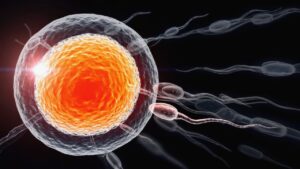
ثُمَّ خَلَقْنَا النُّطْفَةَ عَلَقَةً
“Then We made the drop into a clinging clot (alaqah).”
(Quran 23:14)
Alaqah means something that sticks or hangs, like a leech. It shows how the early embryo attaches to the mother’s womb and gets nutrition, just like a leech.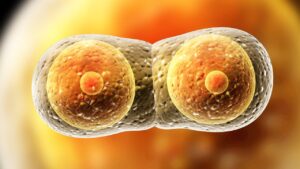
فَخَلَقْنَا الْعَلَقَةَ مُضْغَةً
“Then We made the clot into a lump (mudghah).”
(Quran 23:14)
Mudghah means something chewed or a small piece of flesh, like gum with teeth marks. This matches the early embryo, which has little ridges (like teeth marks) as its organs start forming.
فَخَلَقْنَا الْمُضْغَةَ عِظَامًا فَكَسَوْنَا الْعِظَامَ لَحْمًا
“Then We made out of that lump, bones, and clothed the bones with flesh.”
(Quran 23:14)
This part describes how bones form first and then are covered with muscles and flesh. Scientists have found this is how it happens inside the womb.
يَخْلُقُكُمْ فِي بُطُونِ أُمَّهَاتِكُمْ خَلْقًا مِّن بَعْدِ خَلْقٍ فِي ظُلُمَاتٍ ثَلَاثٍ
“He creates you in the wombs of your mothers, creation after creation, in three layers of darkness.”
(Quran 39:6)
The “three darknesses” are the womb, placenta, and amniotic sac. These protect the baby as it grows until it is fully formed.
Modern Science and the Quran
Comparative Insights
Today, modern science and the Quran show a remarkable agreement about embryonic stages.
Many scientists, like Dr. Keith Moore, have said that the verses in the Quran describe human development in a way that matches what we now see under a microscope.
Quran
ثُمَّ خَلَقْنَا النُّطْفَةَ عَلَقَةً ثُمَّ خَلَقْنَا الْعَلَقَةَ مُضْغَةً
“Then We made the drop into a clinging clot, then We made the clot into a lump (of flesh)…”
(Quran 23:14)
- Embryonic stages described by science match the steps: drop, clot, lump, bones, flesh.
- Dr. Keith Moore (a world expert in embryology) said, “The descriptions in the Quran couldn’t have been known in the 7th century.”
- Scientists today use ultrasounds and microscopes to see these stages, which are just as the Quran describes.
Dr. Keith Moore even added Quranic passages to later editions of his Embryology textbook because they matched modern discoveries so well!
Significance of the Stages of Fetus in Quran
Step by Step Growth, Deeper Spiritual Meaning
The Quran gives a step-by-step description of how a baby grows inside the womb. Each stage is small and important. This teaches us to trust in Allah’s plan and respect every life from the very beginning.
Quran
مَا لَكُمْ لَا تَرْجُونَ لِلَّهِ وَقَارًا
وَقَدْ خَلَقَكُمْ أَطْوَارًا
“What is [the matter] with you that you are not conscious of Allah’s majesty, while He has created you in stages?”
(Quran 71:13-14)
Allah reminds us that human growth happens in phases, showing His wisdom and power.
Hadith
إِنَّ أَحَدَكُمْ يُجْمَعُ خَلْقُهُ فِي بَطْنِ أُمِّهِ أَرْبَعِينَ يَوْمًا نُطْفَةً…
“Each of you is gathered in your mother’s womb for forty days as a drop (nutfah)…”
(Sahih Bukhari 3208)
The Prophet Muhammad ﷺ explained the same stages, teaching us the value and care in every phase of life.
These stages remind us to trust Allah’s wisdom. Every person’s start is different yet valuable, and every life deserves dignity and kindness from its first day.
Critiques and Debates
Different Scholarly Views on Quranic Embryology
Quranic embryology has been studied by both supporters and critics.
Some scholars say the Quran’s descriptions are very close to modern science, while others question if these details are new or unique.
This friendly debate helps us all learn more about the origins and accuracy of these verses.
✅
Supporters like Dr. Keith Moore say the Quran’s stages are “astonishingly accurate” for its time. They believe this shows divine knowledge and a miracle of science in the Quran.
Quran
ثُمَّ خَلَقْنَا النُّطْفَةَ عَلَقَةً فَخَلَقْنَا الْعَلَقَةَ مُضْغَةً
“Then We made the drop into a clinging clot (alaqah), then We made the clot into a lump (mudghah)…”
(Quran 23:14)
⚠
Critics say that some ideas about fetus growth were also found in old Greek or Indian books.
They wonder if these verses are universal knowledge or something unique to the Quran.
Some scientists say the wording is more poetic than medical.
Hadith
أَنْتُمْ أَعْلَمُ بِأُمُورِ دُنْيَاكُمْ
“You know best about your worldly matters.”
(Sahih Muslim 2363)
Debates help us think more. They remind us the Quran’s message is always open to learning and new discoveries, whether we see these verses as miracle or curiosity.
Conclusion
Quranic Wisdom and Science in Harmony
The journey through Quranic verses and embryology shows us a wonderful harmony between divine revelation and modern discovery. Step by step, the Quran describes human growth in a way that even today’s science respects. In this way we explore this topics under this subtopics are Embryology in the Quran, Quran and embryology, Embryonic stages in Quran, Human development in Islam, Stages of fetus in Quran
Quran
وَفِي أَنفُسِكُمْ أَفَلَا تُبْصِرُونَ
“And in yourselves. Can you not see?”
(Quran 51:21)This verse reminds us to reflect on the miracle of our own creation.
The Islamic view of human life is holistic. It means our body and soul are both valued, and respect for every person starts even before birth. The beautiful connection between Quranic guidance and scientific knowledge invites us to trust in wisdom, seek understanding, and show kindness—always.
Frequently Asked Questions
Clear Answers on the Quran and Embryology
Quran
ثُمَّ جَعَلْنَاهُ نُطْفَةً فِي قَرَارٍ مَّكِينٍ
ثُمَّ خَلَقْنَا النُّطْفَةَ عَلَقَةً
فَخَلَقْنَا الْعَلَقَةَ مُضْغَةً“Then We made him a drop (nutfah) in a firm resting place. Then We made the drop into a clinging clot (alaqah). Then We made the clot into a lump (mudghah).”
(Quran 23:13-14)
The Quran describes these main stages:
- Nutfah – a drop (sperm or mixed fluid).
- Alaqah – a clinging clot or something that hangs.
- Mudghah – a small lump, like chewed flesh.
These match early steps we see in embryology today.
- The Quran’s stages of drop, clot, and lump match what science sees under a microscope.
- Experts like Dr. Keith Moore said these verses describe things “no one could see” in the 7th century.
- Modern imaging tools now show the mudghah and alaqah stages, confirming the Qur’an’s accurate sequence.
This agreement is surprising and leads many to reflect on the knowledge in the Quran.
Hadith
إِنَّ أَحَدَكُمْ يُجْمَعُ خَلْقُهُ فِي بَطْنِ أُمِّهِ أَرْبَعِينَ يَوْمًا نُطْفَةً
“Each of you is gathered in your mother’s womb for forty days as a drop (nutfah)…”
(Sahih Bukhari 3208)
This means dignity and care are given to the unborn child from the very start.
References
Explore More: Authentic Sources & Academic Works
- The Qur’an
— Main religious text; see translations by Sahih International, Yusuf Ali, and others.
[Read Online] - Sahih al-Bukhari, Book 54, Hadith 430
— Describes stages of creation in the womb as taught by Prophet Muhammad.
[View Hadith] - Sahih Muslim, Book 33, Hadith 6390
— “You know best about your worldly matters” hadith related to science.
[View Hadith] - Moore, K.L. (1986).
A Scientist’s Interpretation of References to Embryology in the Qur’an. Journal of the Islamic Medical Association, 18: 15–20
[Read Article] - Moore, K.L., Persaud, T.V.N.
The Developing Human: Clinically Oriented Embryology. 12th Edition. Elsevier.
[Publisher Link] - Ghaly, M. (2012).
Human Embryology and the Holy Scriptures: Religious and Scientific Prospects of Interdisciplinary Dialogue. Zygon, 47(2): 344-357
[Read Online] - UNSW Embryology — Human Embryonic Development Stages
— Medical university resource explaining human embryo stages.
[Visit]
